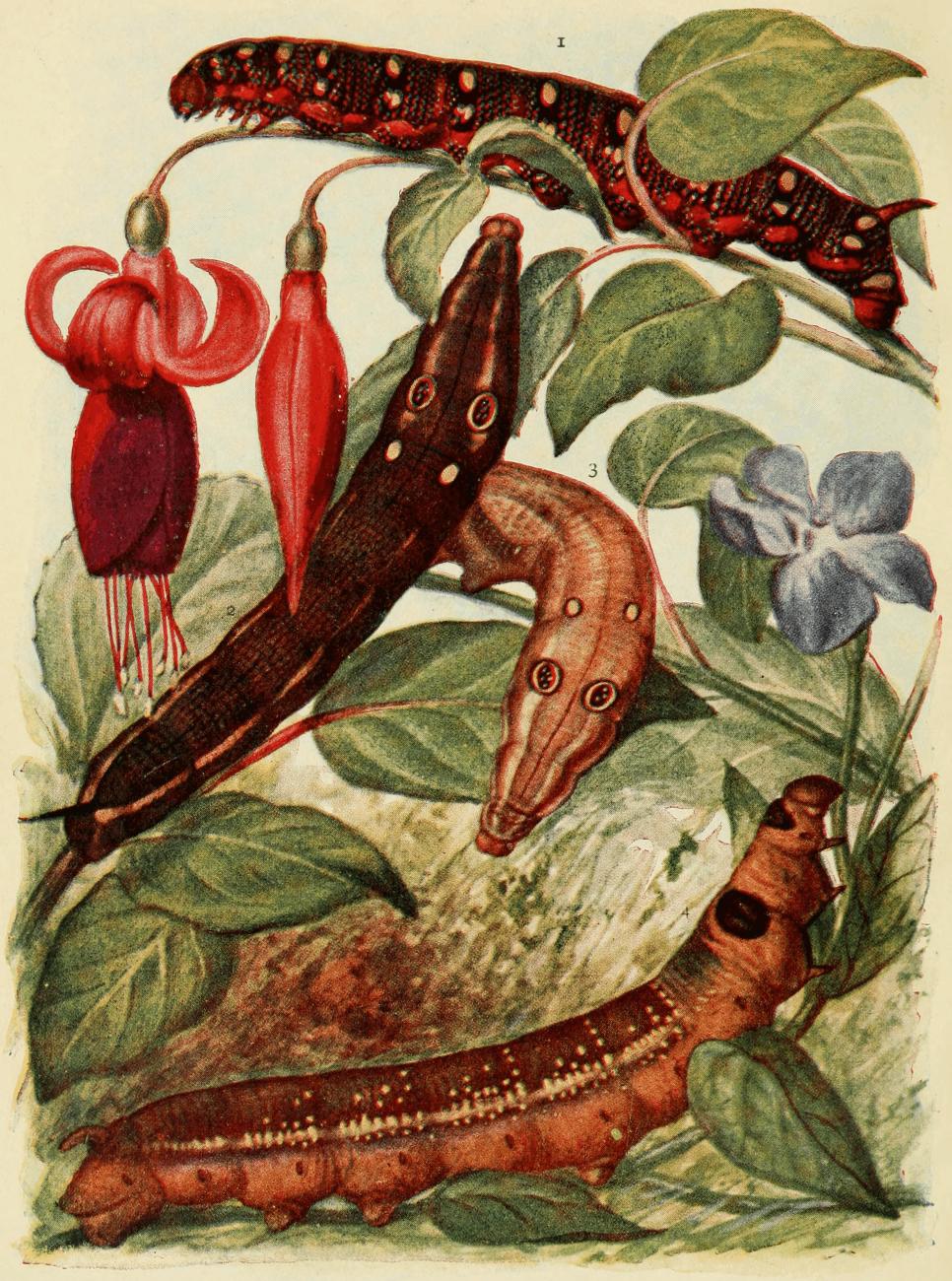| Pl. 1. | ||
| ||
| ||
|
THE MOTHS
OF THE
BRITISH ISLES
BY
RICHARD SOUTH, F.E.S.
AUTHOR OF
"THE BUTTERFLIES OF THE BRITISH ISLES"
EDITOR OF "THE ENTOMOLOGIST," ETC.
FIRST SERIES
COMPRISING
THE FAMILIES SPHINGIDÆ TO NOCTUIDÆ
WITH
ACCURATELY COLOURED FIGURES
OF EVERY SPECIES AND MANY VARIETIES
ALSO DRAWINGS OF EGGS, CATERPILLARS,
CHRYSALIDS AND FOOD-PLANTS
LONDON
FREDERICK WARNE & CO.
AND NEW YORK
1907
(All rights reserved)
PRINTED IN GREAT BRITAIN
PREFACE.
Compared with our butterflies, the number of moths found in the British Isles is very large. Like the butterflies, moths too are dependent upon plant life, and almost every kind of herb, bush, or tree, will be found to nourish the caterpillars of one or more species of moth.
Not only the field botanist, but every rambler in the country must constantly come across moths or caterpillars that will probably interest him, and of which he would be glad to learn something about their habits, life-history, and the position they occupy in the arrangement and classification of Natural History objects.
In the preparation of this little book on our moths, the author has proceeded closely on the lines adopted when dealing with the butterflies in his previous volume. That is, the chief aim has been to place before the nature lovers as much information concerning these creatures as could be condensed into moderate limits.
Lengthy descriptions were out of the question, but what might be considered an omission in this way, is amply compensated for by the life-like portraits of typical examples of the moths themselves, and in many cases of their more important varieties. Technicalities have been avoided as far as possible, the main object being to provide a guide to the identification of our moths, together with a simple account of the whole or a part of their earlier stages.
The author is fully aware that this method of treatment only enables him to touch the fringe of the subject, as it were, but he has been content to deal with it in this way, as it appeared to be the kind of information that would most nearly meet the requirements of the majority.
The author desires here to express his thanks to Mr. Robert Adkin, F.E.S., for the loan of specimens of L. cœnosa, E. ilicifolia, D. harpagul BU KİTABI OKUMAK İÇİN ÜYE OLUN VEYA GİRİŞ YAPIN!
Sitemize Üyelik ÜCRETSİZDİR!
